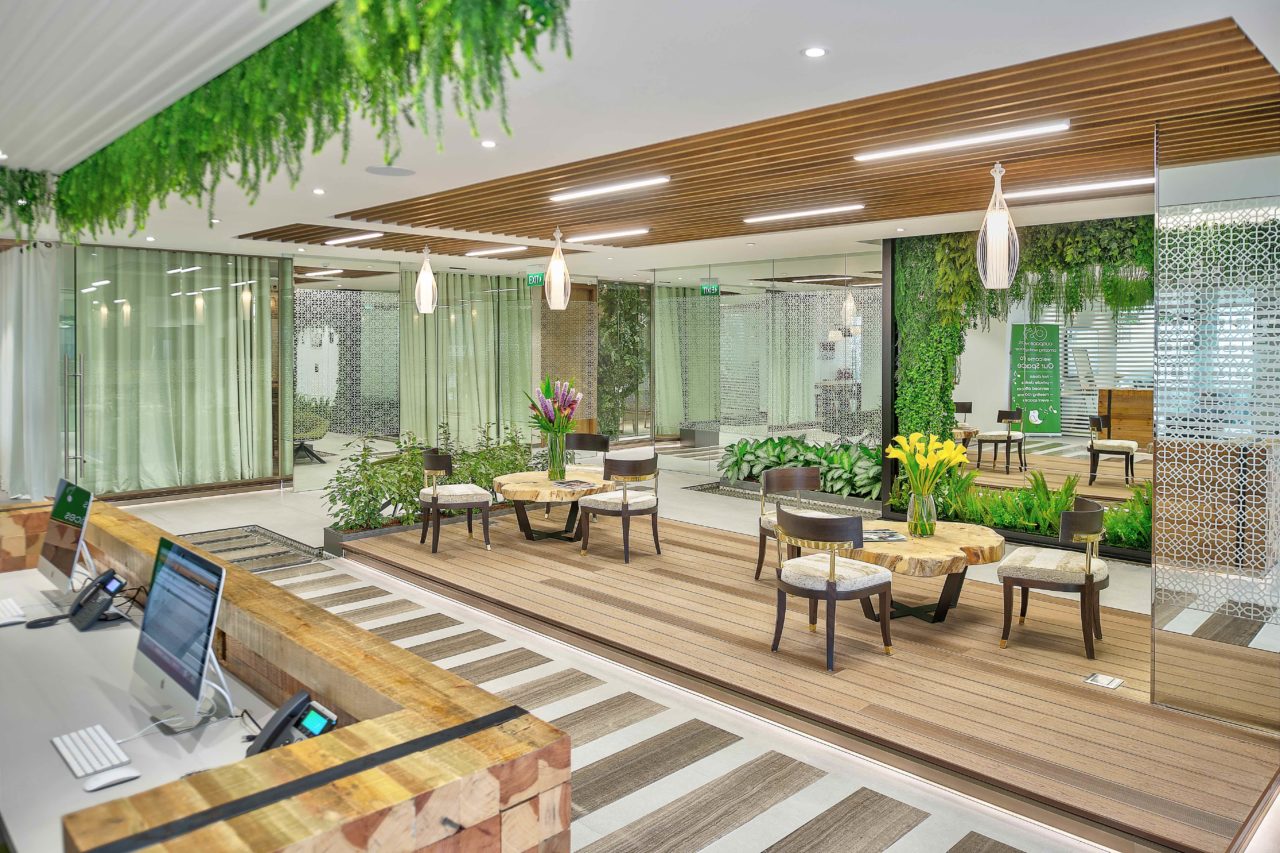The UAE is taking workplace wellness to the next level by promoting the WELL Building Standard, which aims to boost employee performance by improving everything from the air they breath to the desks they sit at.
“Currently, companies are looking at wellness strategies, like programs for nutrition, smoking cessation, giving somebody a gym membership and they’re really not working,” said Ann Marie Aguilar, director of European operations at the International WELL Building Institute (IWBI) in New York. “So what we’re starting to see is people need to be inside healthy environments. You can’t really encourage someone to opt into health, but you can design a space — where people spend more than 90 percent of their time, inside buildings — so it promotes health.”
Just how to do that was the subject of a WELL Building Standard workshop in Dubai, organized by Emirates Green Building Council (Emirates GBC) and IWBI. Their aim was to shed more light on how design, operation and behavior within a work space can be optimized to improve how employees work and feel.
The WELL Building Standard is one that is used to give architects, engineers, HR professionals and corporate real estate the tools to design a building with a healthier internal environment to improve workplace wellness.
The goal is to produce better air quality by using the right filters and improve artificial lighting so it has less of a negative impact on circadian rhythms, meaning workers can have a better sleep at home from the time they spend at work.
“We look at specific lighting that allows you to modulate your hormonal balance,” explains Aguilar.
Boosting nutrition in any food provided at work is another factor, as is movement. On that front, sit-stand desks, views to the outside and the liberal use of plants and natural materials and improving sound and acoustic performance are all seen as ways to boost brain health at work and have a positive effect on people’s sense of wellbeing overall.
“If you can design a place that has all these features built-in, then nobody in this space has to opt into the wellness program, because they’re actually living inside it every day,” Aguilar adds. “So it’s 100 percent awareness and the staff gets the benefit.”
Employees in the Gulf have long been exposed to gloomy environments with poor air quality, unhealthy food options and water from plastic bottles. Companies are starting to change, however, and slowly introducing wellness programs to their employees.
“Companies are really serious about this today, because the overwhelming cost of unwell employees is huge and it takes a huge toll on the economic performance of companies and countries,” Aguilar says. “The workplace becomes a place where you can attract a high quality of talent, so whatever you can do to encourage a better health impact and a nicer space that has all of these attributes means you’re able to bring that talent to the table.”
So far, 18 projects have been signed up to the new design in the UAE, along with three in Qatar, Egypt and Kuwait. District 2020, the legacy project of Dubai Expo 2020, will be the first WELL community in the Middle East.
“The UAE is really aware of this prominent move toward healthier workplaces, residential places and education and it’s trying to understand how to put the focus of human health at the heart of buildings,” says Aguilar.
For Farrah Yassine, principal sustainability consultant with the Sustainable Resource Management team at WSP Middle East, one of the worst factors in Middle Eastern offices is air quality and respiratory health.
“If you increase outdoor air in your AC, there’s a lot of energy associated with cooling and cleaning it,” she said. “And because of that, we don’t have a lot of fresh air internally, which causes carbon dioxide and Volatile Organic Compounds (VOC) levels to go up, making people feel woozy. That’s reflected in studies, especially in schools, on very low indoor air quality where the children aren’t able to concentrate.”
Although Dubai is on the right track, standards need to be raised to support the improvement of workplace wellness.
“They’re working on developing health and wellbeing codes and the UAE is at the forefront,” said Yassine. “Co-working spaces are also doing well. We’re designing for people who are working now, but we should also think about what we’re doing for the future.”
According to Saeed Al Abbar, chairman of EmiratesGBC, the value of buildings where people thrive and prosper is integrally linked to the wellness of its residents.
“Sustainable living also incorporates this important aspect, where buildings and spaces are designed and maintained to promote the welfare of the people,” he said. “As the UAE focuses on driving green built environments to achieve its vision for sustainable development, incorporating standards for wellbeing adds further value for the building and its occupants”.
Featured image courtesy Our Space, Dubai.

